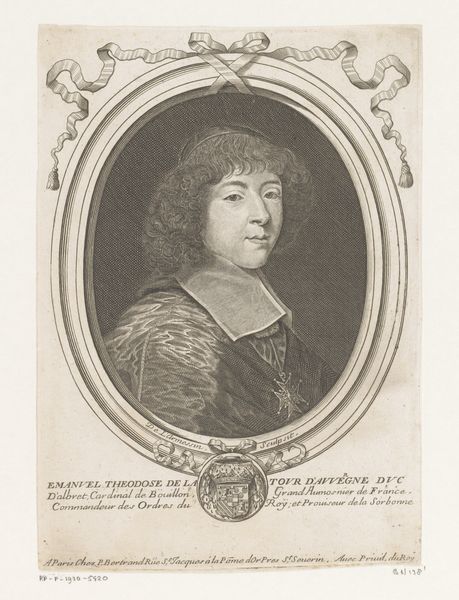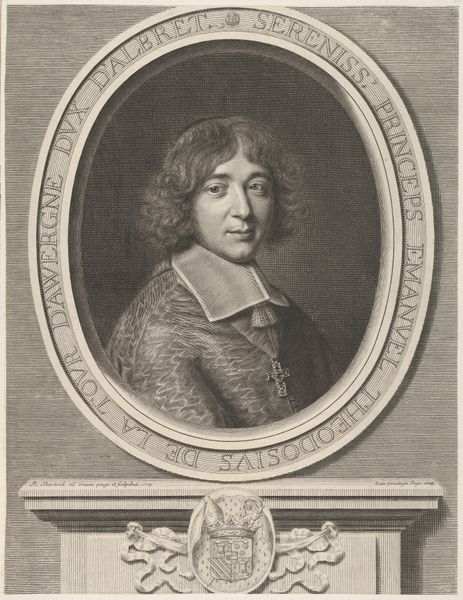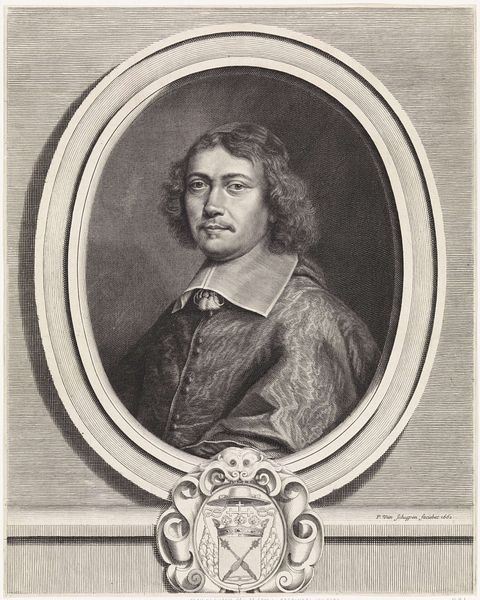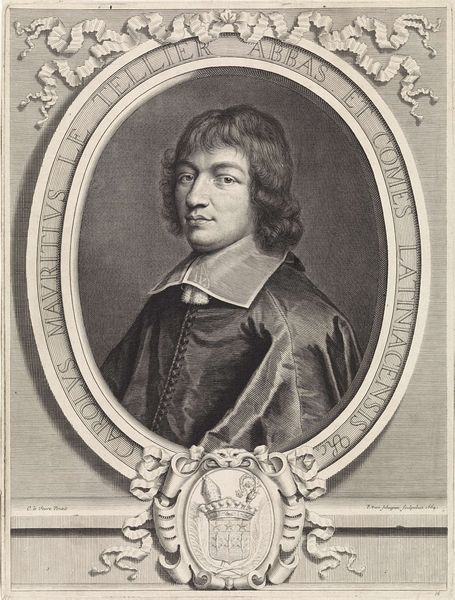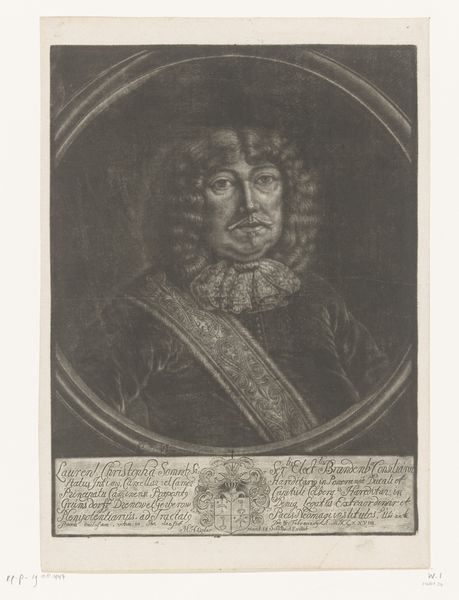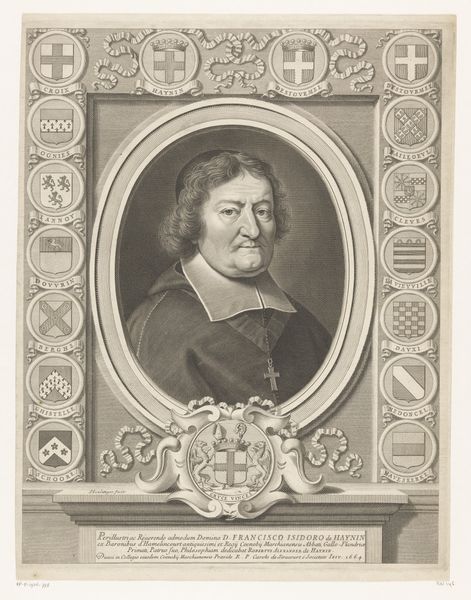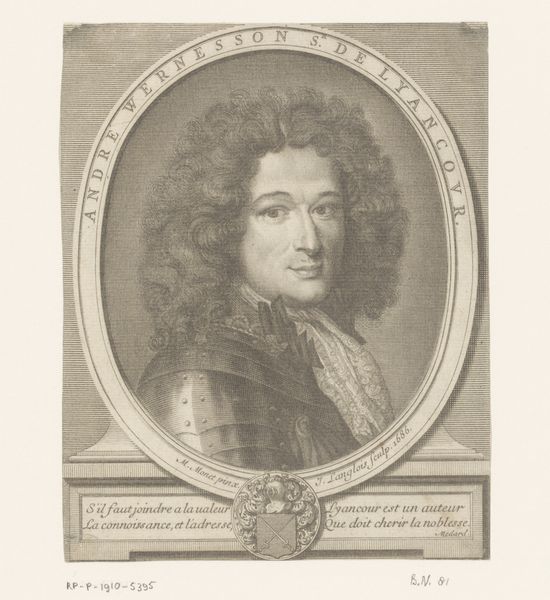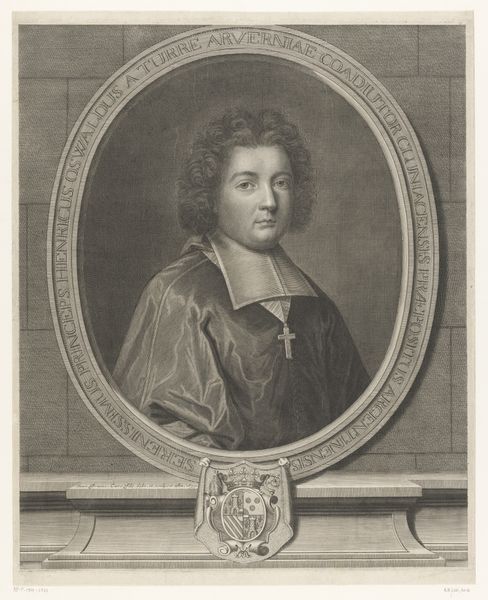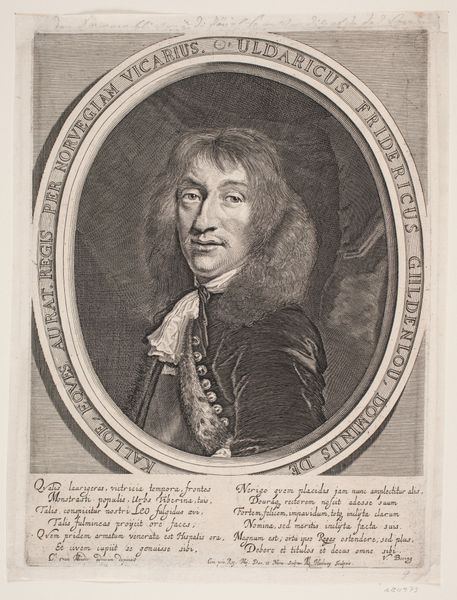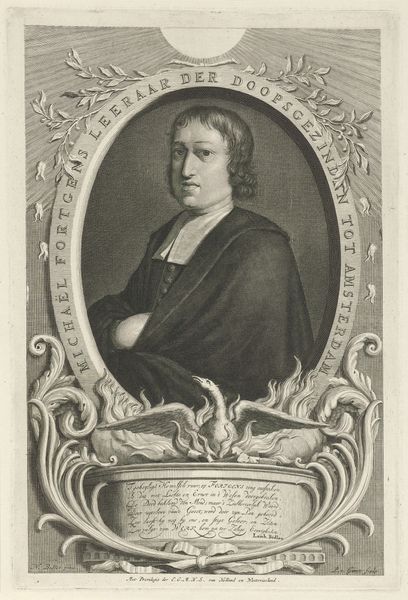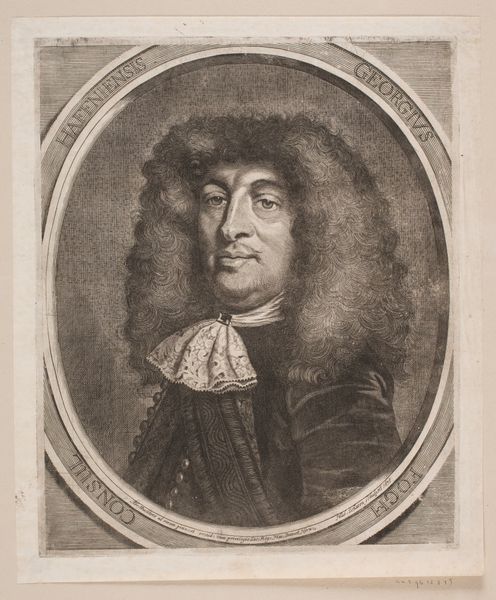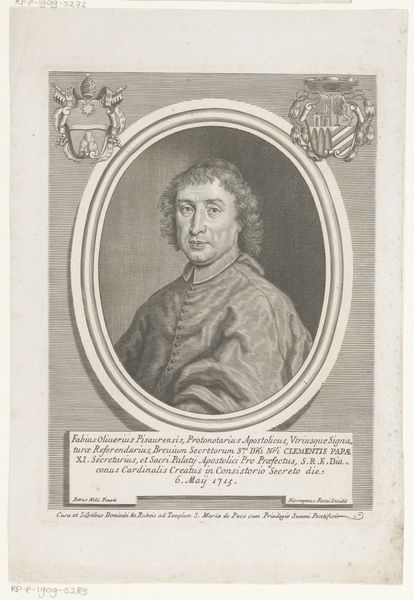
print, engraving
#
portrait
#
baroque
# print
#
old engraving style
#
figuration
#
history-painting
#
academic-art
#
engraving
Dimensions: height 235 mm, width 172 mm
Copyright: Rijks Museum: Open Domain
Curator: This is Nicolas de Larmessin’s 1681 engraving, “Portret van Charles-Maurice Le Tellier,” now held at the Rijksmuseum. The work presents us with an intriguing figure, Charles-Maurice Le Tellier himself. Editor: It's a classic Baroque portrait—stern and composed. The tight oval composition and detailed linework create a striking visual tension, especially in the play of light across the subject's face. Curator: Indeed. Larmessin, part of a family dynasty of engravers, created this portrait as part of a larger series of prominent figures of the time. Consider the status of printmaking back then. This wasn’t merely decorative, but a crucial form of disseminating imagery and reinforcing social hierarchies. Le Tellier, as Archbishop and important political figure, embodies that power structure. Editor: I agree about the importance of prints but would also highlight Larmessin's technical skill. The variations in line thickness create convincing tonal shifts, giving Le Tellier's robes a sense of luxurious weight and texture, quite a remarkable feat using only line. The rendering of the lace collar and the hair is superb. Curator: Absolutely. These details served specific ideological functions. Baroque art served as propaganda. Here, Larmessin employs conventional symbols – the ribbons, the coat of arms – which project Le Tellier’s authority and legitimize his position. Editor: And even the formal frame functions within this structured visual vocabulary of the period, underscoring his place within a system of power. It encapsulates him as if an exhibit—objectified and contained. The details pull you into examining all that represents a Baroque leader in detail. Curator: I’m struck by the historical resonance this work possesses. These prints give us access to people who shaped political policies of the time. They allow us to imagine the society which this man not only moved around but also shaped. Editor: Ultimately, it’s the convergence of visual skill and societal record that allows us to regard such Baroque portraits today.
Comments
No comments
Be the first to comment and join the conversation on the ultimate creative platform.


